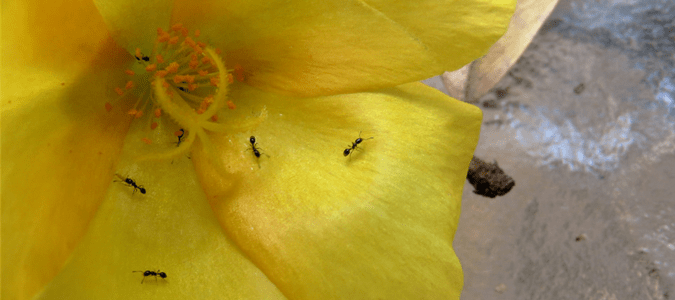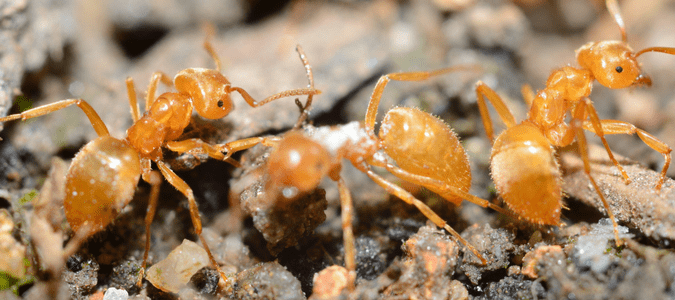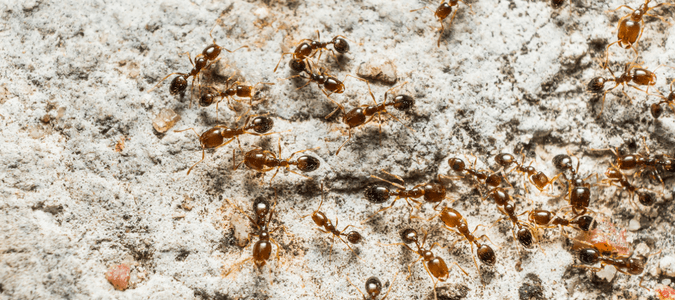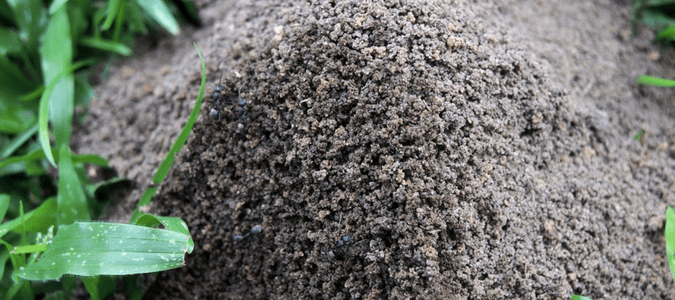
As a homeowner in Florida, you realize that you share your property with several ant species. Ranging from the ghost ant to the carpenter ant to the red fire ant, more than 50 ant species live in the Sunshine State. Our subtropical climate provides a home to 65 exotic species as well, the most significant exotic and fauna, or wildlife, in the country.
Included in that list of species are many different types of tiny ants, with a list that consists of the pharaoh ant, sugar ant, black ant, and, most recently, the little yellow ant. While their size might make them seem harmless, some tiny ant species can cause notable damage or even leave us with painful bites.
If you’re curious to learn more about a few species of tiny ants in Florida, including what attracts them and what impact it can have, keep reading—this blog post is for you.

Yellow Ants
While other species, like the black ant or carpenter ant, have been known to live in Florida for quite some time now, the yellow ant is a new, unwelcome neighbor for most Floridians. According to researchers at the University of Florida, this ant species arrived in Florida just before the winter season in 2017. Native to Madagascar, these small, yellow ants had never been seen in the U.S. outside of Hawaii. The researchers believe Hurricane Irma could have been a factor in bringing the species from the Caribbean or South America.
The yellow ant is tiny, measuring just 1/16th of an inch. Its natural foods include flower nectar and honeydew discharged by sap-sucking insects.
The yellow ant doesn’t bite or sting but is challenging to control. Their incredibly small size enables the species to grow, colonize and spread without being noticed. As such, once spotted, your home is likely already infested with tiny yellow ants. Another factor to note is this ant’s potential to impact the state’s agriculture negatively. While the University of Florida researchers are still unsure of the extent of the damage the ants can cause, they do know the ant is associated with aphids, mealy bugs, and scale insects, which can all potentially harm crops and ornamental plants. These ants don’t necessarily eat the plants, though. Instead, they protect the insects that do.
Yellow ants are typically found in areas of high moisture. That means that they can typically be found in your home living in wood. Outside nests are usually situated in the soil next to structures, along foundation walls, or under rotting wooden logs. So, if you find yourself with a yellow ant infestation, there’s likely a moisture problem in your home, too. If inside, you can remove yellow ants with a vacuum cleaner. If outdoors, however, you’ll want to focus on locating the ants’ nest to address your yellow ant population.

Ghost Ants In Florida
Measuring just 1/8 inch long, the ghost ant is part of a larger group of tramp ants widely distributed worldwide in tropical and subtropical latitudes. However, they are primarily found in Florida from Sarasota to Orlando and southward. Though the ghost ant prefers tropical climates, this type of ant is highly adaptable in its nesting habits, able to make a home both indoors and out. Indoors, the ant species colonizes wall voids or spaces between cabinets and baseboards; ghost ants can nest in potted plants. However, these ants inhabit moist grass, plant stems, and cavities in open, rapidly changing habitats.
Despite its ability to nest outdoors, the ghost ant is still considered a household pest because it has been found to feed upon many household foods, especially sweets. These ants have been observed feeding on sugar, cakes, and syrups. If outdoors, worker ants scour for dead insects and tend sap-sucking insects, collecting honeydew.
Once in your home, the ghost ant is easily recognized and typically found in kitchens, bathrooms, sinks, counters, and floors. Your best bet to control ghost ants already in your home is to maintain a clean house. Store foods in tight containers, ensure countertops are clear of any food particles, and reduce moisture sources, like leaks or excess condensation around fridges.

Pharaoh Ants In Florida
Dubbed one of the most difficult household ants to control, the Pharaoh ant is distributed worldwide, but its origins are traced back to Africa. While the Pharaoh ant does not nest outdoors, except in southern latitudes, it has successfully adapted to conditions in south Florida.
The Pharaoh ant ranges in size, typically measuring around 1/16 inch in length. The antenna of this species of ant has 12 segments of the 3-segmented antennal clubs, which increase in size toward the apex of the club. This species’ body color ranges from yellow to light brown.
As mentioned above, the Pharaoh ant is considered a major indoor pest in the United States. This species can survive most household pest control treatments and is known to occupy large parts of a building, primarily where food is handled. The pharaoh ant enjoys a wide variety of food types, including sweet, fatty, or oily foods, which is one reason this type of ant is considered such a problem. As a result, many homeowners are forced to discard foods that the ant workers have contaminated. Despite their appetite for destruction, the Pharaoh ant can also inhabit areas where food is not typically found, such as in between sheets of stationery, bed linens and clothes, appliances, and sometimes trash.
Because of the ant’s ability to nest in often unseen or inaccessible areas, Pharaoh ants are hard to control once an infestation is detected. To treat a Pharaoh ant infestation, treatment solutions must be applied to every possible nesting area, including walls, ceilings, floor voids, and electrical wall outlets.
If using pest control solutions to eliminate your Pharaoh ant population, locate baits property to ensure their effectiveness. Place the bait in corners and along the edges of door moldings or baseboards, as Pharaoh ants tend to be more concentrated in these areas. Furthermore, opt for non-repellent baits instead of repellent tricks, as the latter can worsen the infestation by causing the colony to split into two or more new territories. This splitting and reforming of new settlements is referred to as budding. Other options include an insect growth regulator or IGR. Used as bait, the IGR prevents the production of worker ants and sterilizes the queen.

How To Get Rid Of Ants
No matter the species, an ant’s motivation for entering your home is similar: to find food. Shelter and protection from other predators are other motivating factors, too. Once they make a home in yours, it’s doubtful they’ll decide to leave on their own accord. You can use a few techniques to help eliminate ants in your home.
The first plan of action is to identify the ant species. Then, you’ll want to find where the colony is nesting. Pinpointing the location of the nest will lead you to the queen. Removing the queen will result in a halt in ant reproduction. One way to find the colony is to follow the trail created by the ants that enter and leave your home. In leaving your home, worker ants leave a scent trail for other ants to track and gather food. Instead of spraying the worker ants seen on the course, use them to your advantage. Place bait stations along the ants’ route, prompting the worker ants to carry the bait back to the nest to feed the queen, eventually killing her.
Before removing the trail of ants, you’ll also want to watch if it leads you outdoors. Often, another colony is nesting there as well. If the path does lead you to a below-ground nest, use approved insecticide spray to eliminate the entire nest.
How To Keep Ants Out
As we’ve mentioned, ants enter your home for food, water, and protection, sneaking in through cracks and crevices in the walls and around windows and doors. To help keep ants out, seal all spaces around windows and doors and all cable, pipe, and wire entry points.
Inside, be sure to keep your home clean to prevent attracting ants. After meals, wipe down countertops to ensure no crumbs are left behind, and keep packaged foods sealed or in airtight containers. Also, take the time to sweep your floors for any fallen crumbs.
ABC Can Solve Your Ant Problems
While many at-home remedies can be used to rid your home of an ant infestation, some species are hard to eliminate. Our ABC Home & Commercial Services team understands the headache an ant infestation can cause. We have the tools and knowledge to develop a customized plan to address the different ant species living on your property and devise effective methods to handle your ant problem—for good.